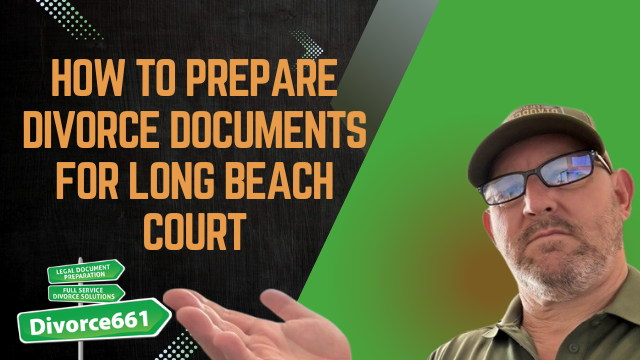How to Get a Cheap Divorce in Long Beach Without Sacrificing Quality
Getting divorced in Long Beach doesn’t have to drain your savings. If both parties are in agreement and want a straightforward split, there are affordable options that still deliver professional, court-approved results—without unnecessary stress or surprise bills.
The biggest mistake people make when trying to save money
Trying to do everything on your own might seem like the cheapest path, but it often backfires. California provides free court forms, but the process is more complicated than filling out documents. Los Angeles County’s e-filing system and strict formatting rules mean that rejected filings, missing disclosures, or improperly prepared judgments can lead to delays and higher costs.
Rejected documents or incomplete paperwork usually require corrections and re-filing. That can add weeks or months to the timeline and cost more than a low-cost professional solution would have in the first place.
Why a flat-fee service is often the smart, affordable route
A flat-fee divorce service designed for amicable couples gives you the best of both worlds: low cost plus professional handling. With the right service, you get:
- Complete document preparation that meets court formatting and disclosure requirements
- Electronic filing with Los Angeles County so documents are submitted correctly the first time
- No courthouse visits—everything handled remotely
- One predictable price with no hourly billing surprises
That combination avoids the pitfalls of DIY filings while staying far cheaper than full-service hourly attorney representation for uncontested cases.
What a full-service flat-fee package typically includes
- Preparation of all required court forms
- Review and assembly of mandatory financial disclosures
- Electronic filing with the court and tracking of the case
- Preparation of the final judgment and necessary follow-up until the case is finalized
- Clear instructions and answers to common questions so you know what to expect
A Long Beach success story
A Long Beach couple was quoted more than $5,000 by a local attorney for an uncontested divorce. They chose a flat-fee approach instead and completed their case for a fraction of that price. Their paperwork was prepared and e-filed properly, the court accepted everything, and their case was finalized within a few weeks—without either party stepping foot in court.
That outcome is typical when both spouses are cooperative and the paperwork is handled by someone familiar with the court’s e-filing and formatting requirements.
How to know if a flat-fee service is right for you
Flat-fee divorce services work best when:
- Both parties agree on division of assets and debts
- There are no complex custody disputes or ongoing support litigation
- Assets and liabilities are straightforward
- You want a fast, remote process with predictable costs
If your case involves contested issues, significant assets, or complicated child custody arrangements, a traditional attorney may be necessary. A reputable flat-fee provider will tell you upfront if your situation is outside the scope of their service.
Steps to a low-cost, professional divorce in Long Beach
- Schedule a free consultation to confirm eligibility and scope.
- Gather financial documents and basic information about assets, debts, and any children.
- Complete intake forms with help from the flat-fee service to ensure accuracy.
- Have required disclosures prepared and exchanged between parties.
- Sign final documents and authorize electronic filing.
- Service handles e-filing, tracks the case, and confirms when the judgment is entered.
- Receive the final judgment and keep a copy for your records.
Tips to avoid hidden fees and costly delays
- Ask for a written flat-fee breakdown so you know what is included and what would trigger extra charges.
- Be thorough and honest when disclosing assets and debts; missing information causes delays.
- Confirm e-filing is included—some services prepare forms but charge extra to file.
- Choose a provider familiar with Los Angeles County rules to avoid formatting rejections.
- Avoid DIY for the first time unless you are confident in court rules and e-filing procedures.
Final thoughts
A cheap divorce does not have to mean low quality. For amicable couples in Long Beach who want a fast, professional, and affordable solution, a flat-fee service that handles document preparation and e-filing can save thousands of dollars and weeks of hassle.
If you want to explore this path, a free consultation can clarify whether your situation qualifies for a flat-fee, no-court divorce and outline the steps to get it done right the first time. Consider a service that offers court-approved documents, electronic filing, and a clear, predictable price so you can move forward with confidence.










